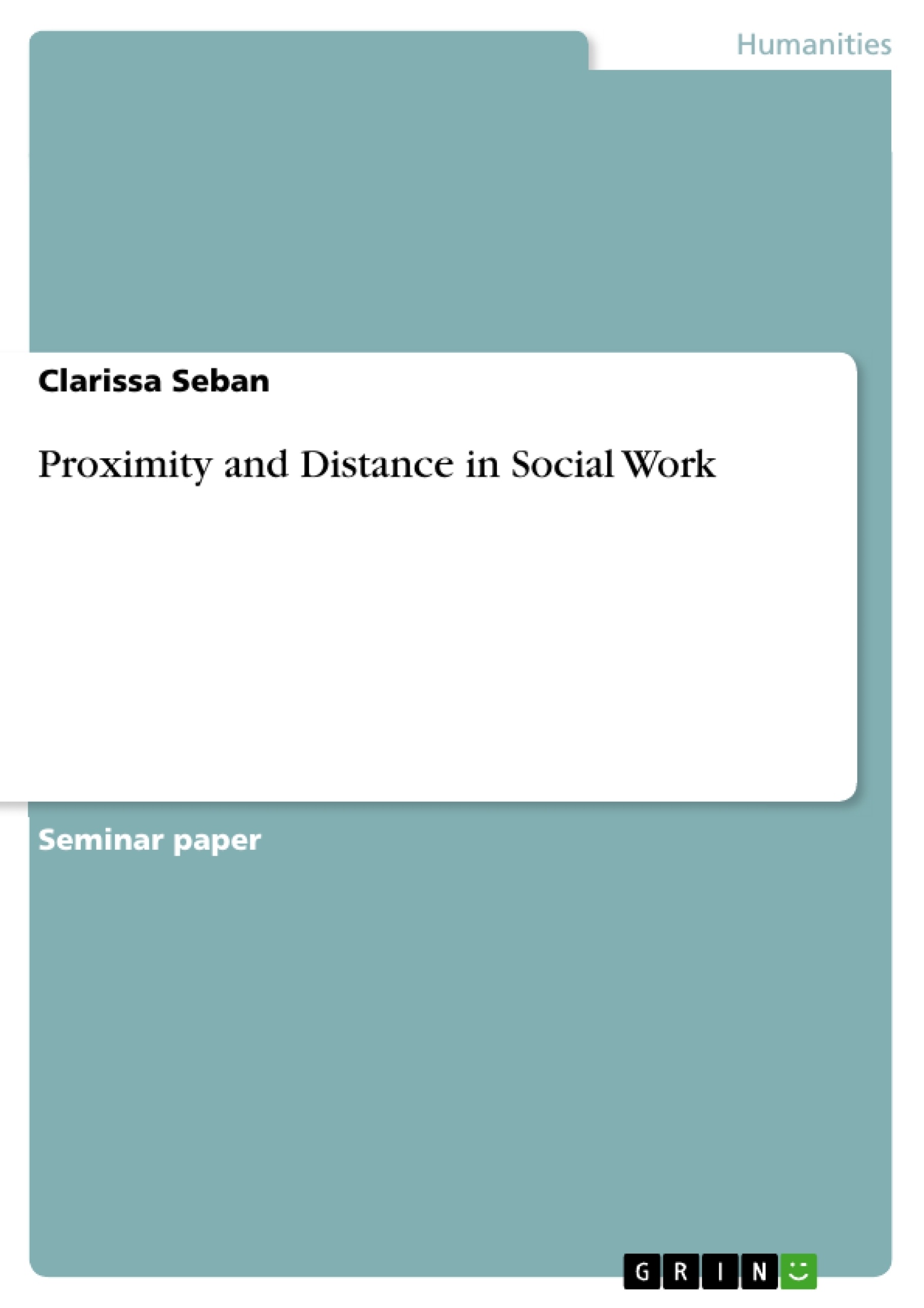In social work, closeness and distance play a very important role as they are fundamental components of interpersonal contact. Every social worker is confronted with proximity and distance on a daily basis. The questions of closeness and distance are omnipresent in the practice of social work in everyday interactions with clients, as well as with colleagues.
It aims at one of the central dimensions in the question of the self-understanding of social work and is usually understood and lived very differently. Some insist on closeness, they insist that social pedagogical action is determined by the quality of the relationship work, the engagement and the building of trust. The others, on the other hand, see the professional ability to distance as the actual characteristic of social pedagogical action.
In the following, I would like to address various points on this topic. To begin with, it must first be clarified what is meant by the terms proximity and distance in relation to social work. Then I will describe in more detail the role that closeness and distance play in everyday interaction. In the next part, pedagogical closeness and distance will be examined in more detail based on the work with adolescents. Furthermore, proximity and distance will be described in more detail using the example of lifeworld-oriented social work. In the last part, the concept of structured openness is briefly introduced.
Table of Contents
- Introduction
- Definitions of proximity and distance
- Proximity and distance in everyday life
- Distancing from everyday life
- Proximity and Distance in Social Work
- Pedagogical proximity and distance
- Proximity and distance in life-world-oriented social work
- The concept of structured openness
- Summary
Objectives and Key Themes
This text explores the concepts of proximity and distance in the context of social work, examining how these concepts impact everyday interactions, professional relationships, and the development of personal growth and independence. It aims to provide a nuanced understanding of these dynamics and their significance in various social work contexts.
- The importance of proximity and distance in interpersonal interactions.
- The interplay between proximity and distance in everyday life and its impact on relationships.
- The role of proximity and distance in the field of social work and pedagogy.
- The application of proximity and distance concepts in life-world-oriented social work.
- The concept of structured openness as a means to balance proximity and distance.
Chapter Summaries
- Introduction: This chapter introduces the concept of proximity and distance in social work, highlighting its importance in interpersonal interactions and the different perspectives on this concept within the field.
- Definitions of proximity and distance: This chapter provides a detailed analysis of the terms “proximity” and “distance,” relating them to movement in space and time, body awareness, and the perceived distances between individuals.
- Proximity and distance in everyday life: This chapter explores how proximity and distance play out in everyday life, including the role of shared experiences, relationship patterns, and coping mechanisms. It also examines the importance of maintaining a balance between closeness and distance for healthy interpersonal interactions.
- Distancing from everyday life: This chapter focuses on the need for a fundamental distance from the structure of everyday life, highlighting the role of cultural symbols, science, and institutions in providing this space for reflection and critical analysis.
- Proximity and Distance in Social Work: This chapter delves into the specific considerations of proximity and distance in the context of social work, examining pedagogical approaches and their impact on the development of independence and self-reliance in clients.
- Pedagogical proximity and distance: This chapter explores the role of pedagogical approaches in balancing proximity and distance in working with children and adolescents, emphasizing the need for both attachment and independence in fostering healthy development.
Keywords
Key concepts explored in this text include proximity, distance, social work, pedagogy, everyday life, interpersonal interaction, relationship patterns, structured openness, and life-world-oriented social work. The text also examines the dynamics of closeness and distance in the context of professional relationships and the importance of balancing these factors for successful interventions and client empowerment.
- Quote paper
- Clarissa Seban (Author), 2010, Proximity and Distance in Social Work, Munich, GRIN Verlag, https://www.grin.com/document/1167856




